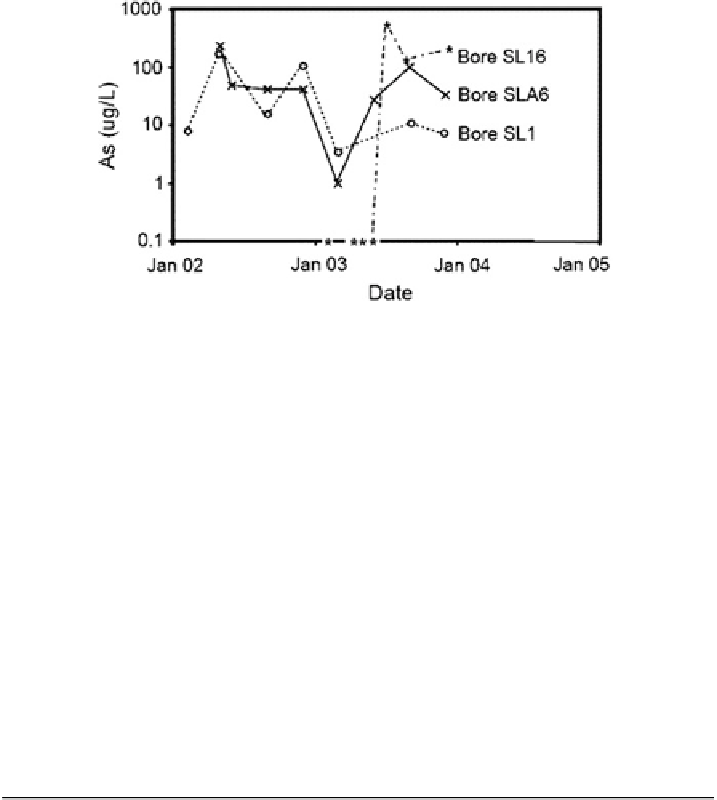Geoscience Reference
In-Depth Information
Fig. 17.17 Variation of As concentrations with time in shallow monitoring wells (Appleyard
et al.
2006
). Reprinted from Appleyard et al. (
2006
). Copyright (2006) with permission from
Elsevier
Table 17.3 Total concentrations of As and Se in water from ash dump ground area (ng/mL) and
concentration ratios of different inorganic forms of As and Se at various oxidation levels (Siepak
et al.
2004
)
As
Se
As(V)/As(III)
Se(IV)/Se(VI)
Sample
year
year
1
2
3
4
1
2
3
4
ng/mL
1
3.10
4.25
2.05
1.50 \0.15
0.20
0.25 \0.15
3.3
-*
2
128.8
86.7
127.1
94.9
18.5
39.1
53.7
52.9
51.7
7.7
A
0.95
0.85
1.05
0.75 \0.15
0.25
0.45
0.40
2.0
1.7
B
0.85
1.60
0.80
0.50 \0.15
0.15
0.25
0.20
2.7
-*
C
1.65
4.60
1.00
0.60 \0.15
0.15
0.25
0.20
1.0
-*
D
1.10
2.15
1.15
1.00
0.20
0.45
0.85
0.65
1.0
2.2
E
32.0
52.5
49.1
39.3
1.75
3.80
6.25
6.00
64.5
1.5
F
0.85
0.80
1.05
1.00 \0.15 \0.15
0.35
0.25
2.3
-*
*Concentration of one of the speciation forms below detection limit
52.9 ng/mL, respectively. In general, the level of contamination varies from site to
site and from year to year in all the sampling points analyzed. Arsenic and sele-
nium species were also determined in year 4; the concentration ratios As(V)/
As(III) and Se(IV)/Se(VI) are shown in Table
17.3
.
Long-term stability of inorganic arsenic and selenium in contaminated
groundwater samples from Kelheim, Germany was reported by Rassler et al.
(
1998
). Groundwater analysis showed very high concentrations of iron, manga-
nese, and sulfur, which resulted from the leaching process of pyrites and their
oxidation products used as filling materials in road and railway construction. As a
result of speciation studies in acidified and nonacidified conditions, it was estab-
lished that dominating species were arsenate and selenate, while arsenite and





